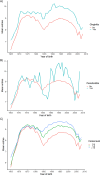The national child odontology registry (SCOR): a valuable resource for odontological and public health research
- PMID: 37644412
- PMCID: PMC10466686
- DOI: 10.1186/s12903-023-03199-1
The national child odontology registry (SCOR): a valuable resource for odontological and public health research
Erratum in
-
Correction: The national child odontology registry (SCOR): a valuable resource for odontological and public health research.BMC Oral Health. 2024 Feb 22;24(1):263. doi: 10.1186/s12903-024-03990-8. BMC Oral Health. 2024. PMID: 38389051 Free PMC article. No abstract available.
Abstract
Background: Since 1972 The National Child Odontology Registry has collected data on the oral health of most of all Danish children and adolescents. However, comprehensive information on the registry has not previously been available, making it difficult to approach and use the registry for research purposes.
Methods: By combining historical documentation and simple descriptive statistics we provide an overview of major events in the timeline of The National Child Odontology Registry and discuss how they impact the available data. We provide a broad overview of the dental variables in the registry, and how the registration criteria for some of the core dental variables (gingivitis, periodontitis, and dental caries) have changed over time. We then provide examples of how aggregate variables for the core dental diseases, allowing for comparison across registration criteria, can be created.
Results: Most of the Danish population born during or after 1965 have a least one entry in the National Child Odontology Registry, with 68% having entries spanning their entire childhood and adolescence. The prevalence of gingivitis and periodontitis seem to increase significantly in the years immediately following changes in how registration criteria for these variables, raising questions as to whether these diseases are generally underreported, or subject to overreporting in the years following the registration changes. The mandatory ages of registration instituted in 2003, do not appear to have had a strong impact on the ages at which registrations are made. For variables not directly comparable across datasets due to changes in registration criteria aggregate variables of measurements can be computed in most cases.
Conclusions: The National Child Odontology Registry provides a unique opportunity to study the impact of childhood oral health on life trajectories, but using the registry is not without issues, and we strongly recommend consulting with experts in the field of odontology to ensure the best use of available data.
Keywords: Dental caries; Gingivitis; Oral health; Periodontitis; Registries.
© 2023. BioMed Central Ltd., part of Springer Nature.
Conflict of interest statement
The authors declare no competing interests.
Figures





References
-
- Friis-Hasché E, editor. Child oral health care in Denmark: a great success in health promotion. Copenhagen: Copenhagen University Press; 1994. p. 87.
-
- H.C.Toft, Minister of the Interior. Bill on Child Dental Care (passed by Parliament at the 3rd processing on May 13th 1971) [Internet]. 19701_L71, 217 May 19, 1971. Available from: https://www.folketingstidende.dk/samling/19701/lovforslag/L71/index.htm.
-
- Niels Anker Kofoed., Minister of Agriculture. Law on Oral Healthcare etc. [Internet]. 19851_L104, 310 Apr 6, 1986. Available from: https://www.folketingstidende.dk/samling/19851/lovforslag/L104/19851_L10....
-
- H.C.Toft, Minister of the Interior. Bill on changes to the law on Child Dental Care (Proposed October 5th 1977 by the Minister of the Interior) [Internet]. 19771_L10 May 10, 1977. Available from: https://www.folketingstidende.dk/samling/19771/lovforslag/L10/19771_L10_....
-
- Ministry of the Interior. Circular on child oral healthcare in municipalities with a dispensation from § 1, part 1 in the Law on Child Dental Care. Retsinformation.dk; 1976.
Publication types
MeSH terms
LinkOut - more resources
Full Text Sources
Medical

